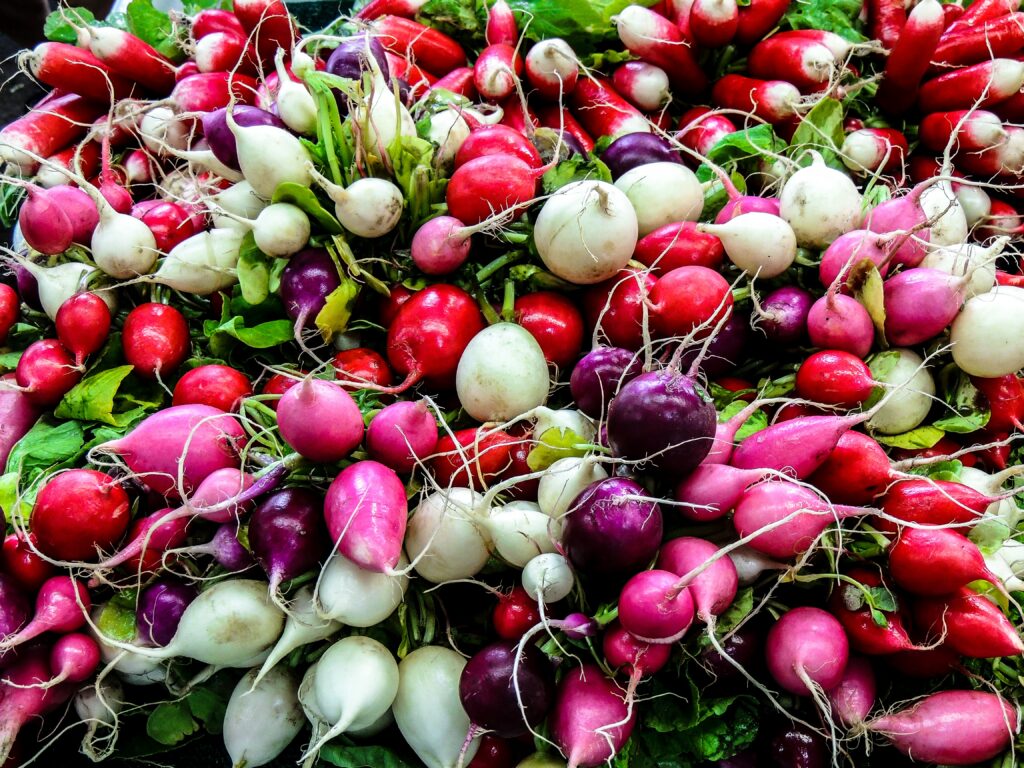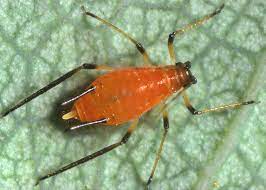
Radishes are easty to grow and thrive in cooler environments and exhibit a high degree of tolerance towards cold weather. Prior to planting, it is recommended to loosen the soil to a depth of at least six inches, and for longer varieties, a depth of one foot or more. The optimal time for planting seeds is between April and early May, with a second planting in August. It is important to note that drought stress can negatively impact the flavor and texture of the roots.
In this guide, we’ll walk you through the whole shebang of growing radishes, from picking the ideal type of radish, prepping the soil, planting those radish seeds, nurturing your flourishing plants, and finally, harvesting and storing your precious radishes.
How to plant radishes?
Select a sunny location that receives a minimum of six hours of sunlight per day. Inadequate sunlight, caused by excessive shade or neighboring vegetable plants obstructing sunlight, will result in radishes channeling their energy towards leaf growth rather than root development. Prepare the soil by tilling it, as compacted soil hinders root growth, and eliminate any rocks present. In the case of clay soil, incorporate organic matter to enhance drainage and loosen its texture. For longer radish varieties, such as ‘White Icicle,’ till the soil to a depth of eight inches.
Picking the perfect radish for your garden
There’s a whole world of radishes out there, including red, white, black, and even rainbow-hued varieties. Some radishes are round, while others are elongated. When selecting a radish variety, consider factors such as your climate, growing season, and your taste buds’ preferences.
Finding that sweet spot for your radish bed or container
Radishes thrive best in a sunny location with well-draining soil. If you’re short on garden space, don’t fret! Consider growing radishes in containers. This allows you to easily control the growing conditions and move the containers around to catch the sun’s rays just right.
Preparing the soil
Radishes are happiest in loose, well-draining soil with a pH between 6.0 and 7.0. Before planting, grab a hoe or rake to break up any large clumps of soil and remove rocks or other debris. If your soil is lacking in nutrients, consider adding compost or organic fertilizer to give your radishes the essential nutrients they need to flourish.
Planting radish seeds
To plant radish seeds, create shallow furrows in your prepared soil, spaced about 6 inches apart. Sow the seeds about ½ inch deep and 1 inch apart. If you’re growing radishes in pots, make sure the containers are at least 6 inches deep to accommodate the developing roots.
- Watering those radish seeds just right: Gently water the radish seeds after planting, ensuring they’re thoroughly moistened. Keep the soil consistently moist but not waterlogged, to promote germination and growth.
- Covering the seeds: After sowing the seeds, cover them lightly with soil, compost, or a thin layer of mulch. This will help conserve moisture and protect the seeds from wind or critters.
When to plant radishes?
Radishes are cool-season champs, meaning they grow best in the cooler temperatures of spring and fall. Plant radishes 4 to 6 weeks before the last expected frost in spring or 4 to 6 weeks before the first expected frost in fall.
Managing pests and diseases
They’re usually pretty tough when it comes to pests and diseases, but occasionally, those pesky aphids, flea beetles, and root maggots might try to crash the party. But fear not! You can totally keep them at bay with natural pest control measures like neem oil or insecticidal soap. It’s a win-win for you and your radishes!

How to avoid overcrowding radishes?
Thinning your radishes is super important for healthy growth and scrumptious, flavorful radishes. Overcrowding can lead to stunted growth and smaller radishes, so it’s essential to give your plants enough space to shine. Here’s the lowdown on thinning your radishes and avoiding overcrowding:
- Once your little radish seedlings reach a height of 2-3 inches, it’s time for a trim.
- Spot the healthiest and largest seedlings in the bunch.
- Grab some scissors or garden shears and gently snip off the extra seedlings at soil level. Be extra careful not to disturb the roots of the remaining plants.
- Give the remaining radish plants a good 2-3 inches of space. This will let each plant grow and develop those yummy radishes.
Keep in mind that skipping the thinning process will make your radishes compete for water and nutrients, resulting in small, underdeveloped radishes. Thinning also helps keep diseases and pests away by increasing airflow and reducing humidity around the plants.
How to harvest and store radishes?
Ah, the joy of harvesting your radishes! It’s the moment when you get to taste the crunchy reward of your gardening efforts. But how do you know when your radishes are ready to be picked? The great news is that radishes are speedy growers and can be harvested just 3-4 weeks after planting. Keep an eye out for the size and color of the radish. When it’s about an inch in diameter and the top of the root peeks above the soil, it’s go-time!
When harvesting, remember to be gentle and avoid damaging the plant. Simply pull the radishes out of the soil by grasping the leaves close to the root. If the soil is a bit compact, a garden fork or a trowel can help you loosen the soil around the root.
Once you’ve harvested your radishes, it’s best to remove the leaves and store them separately. The leaves tend to draw moisture from the root, making the radish soft and less crunchy. Pop the radishes in a plastic bag and store them in the fridge for up to a week. Just be sure to remove any excess moisture before storing to prevent rotting.
The conclusion
In a nutshell, radishes are an amazing vegetable to grow in your garden or containers, as they’re super easy to care for and add a tasty crunch and zesty flavor to salads and sandwiches.
With their unique shapes, sizes, and colors, there’s a radish variety for everyone. This article has covered everything you need to know about growing, harvesting, and storing radishes, including the oh-so-important step of thinning them for healthy growth. Remember, with a little TLC, you can enjoy a bountiful harvest of radishes that can be stored for weeks in the refrigerator.
If you’re eager to learn more about growing radishes, there are tons of fantastic resources out there. Check out local gardening centers, online gardening forums, or books on vegetable gardening for even more tips and tricks. Happy gardening!